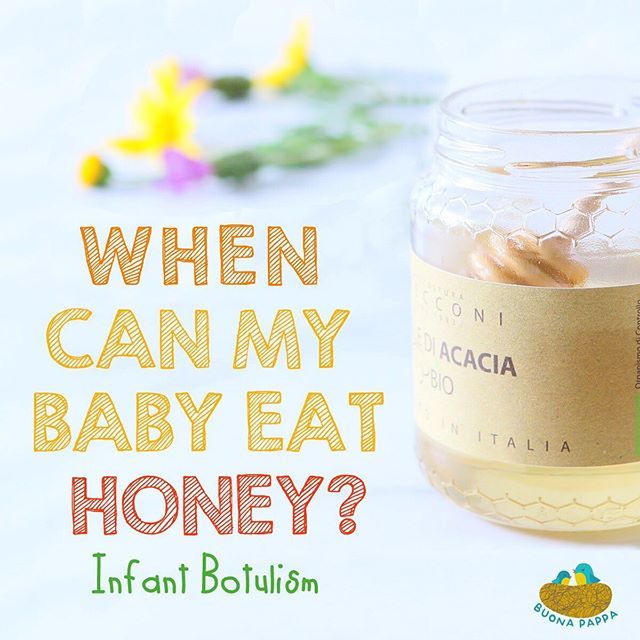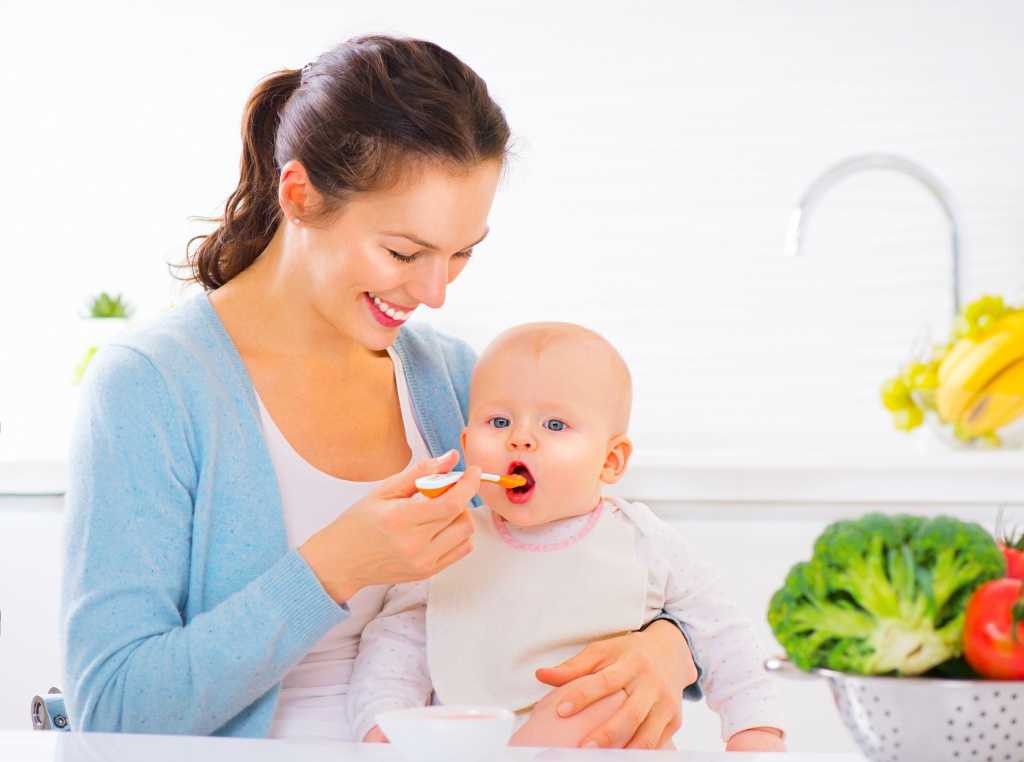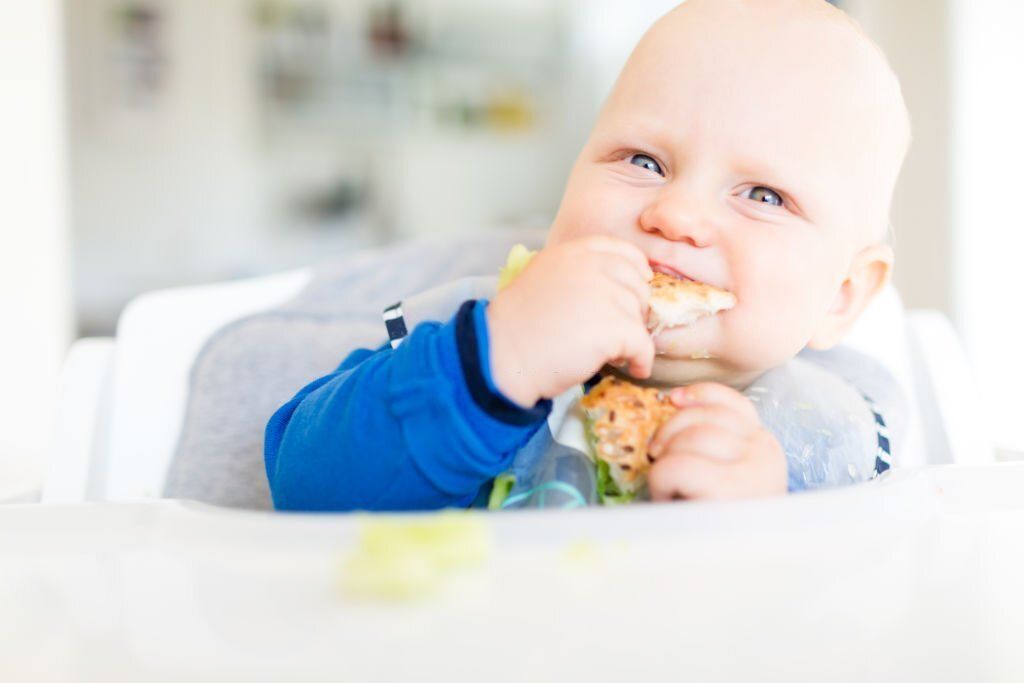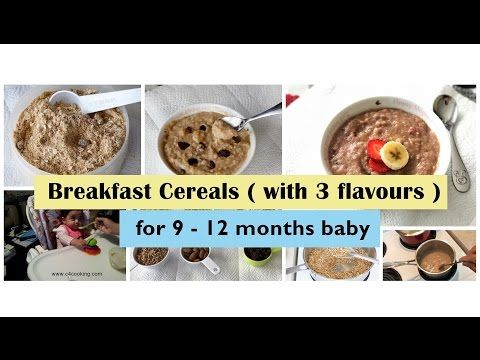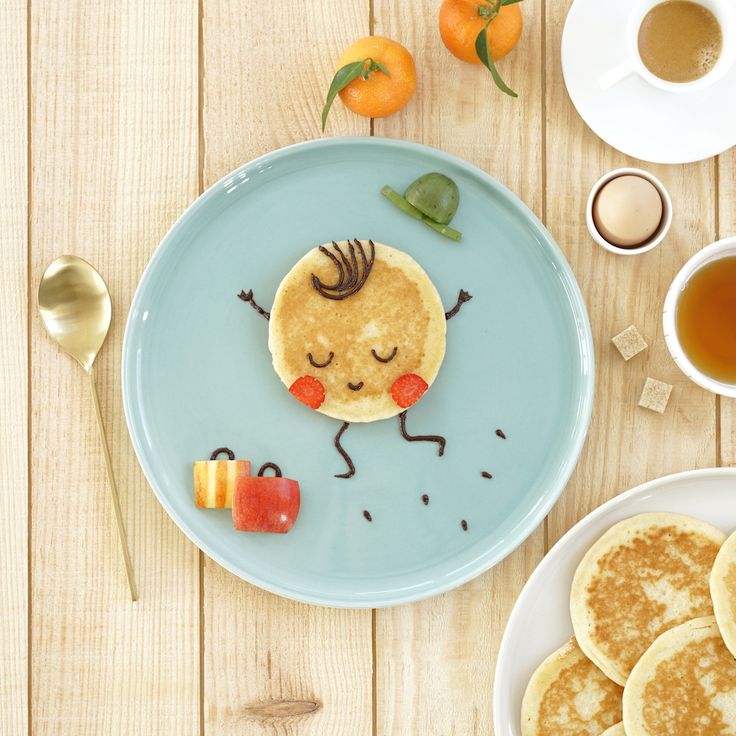Feeding babies honey
Infant Botulism (for Parents) - Nemours KidsHealth
Reviewed by: Kate M. Cronan, MD
Primary Care Pediatrics at Nemours Children's Health
en español Botulismo del lactante
What Is Infant Botulism?
Infant botulism is an illness that can happen when a baby ingests (takes in) toxins from a type of bacteria. Babies with infant botulism (BAH-chuh-liz-im) can have muscle weakness, a weak cry, and trouble breathing. They need to be treated in a hospital. With early diagnosis and proper medical care, a baby should fully recover from the illness.
What Causes Infant Botulism?
Infant botulism is caused by a toxin (a poison) from Clostridium botulinum bacteria, which live in soil and dust. The bacteria can get on surfaces like carpets and floors and also can contaminate honey. That's why babies younger than 1 year old should never be given honey.
These bacteria are harmless to older kids and adults. That's because their mature digestive systems can move the toxins through the body before they cause harm.
Infant botulism usually affects babies who are 3 weeks to 6 months old. But all babies are at risk for it until their first birthday.
What Are the Signs & Symptoms of Infant Botulism?
Babies with infant botulism might have:
- constipation (often the first sign that parents notice)
- weak facial muscles that makes their face look "flat"
- a weak cry
- weak muscles in the arms, legs, and neck
- breathing problems
- trouble swallowing with a lot of drooling
They also might not feed well or move as much as usual.
How Is Infant Botulism Diagnosed?
Doctors diagnose infant botulism by asking about the baby's symptoms. They'll do an exam, and might order tests to see how the baby's muscles are working.
How Is Infant Botulism Treated?
Babies with infant botulism need care in a hospital, usually in the intensive care unit (ICU). The health care team will try to limit the problems the toxin causes in the baby's body.
Doctors treat infant botulism with an antitoxin called botulism immune globulin intravenous (BIGIV). They give this to babies as soon as possible. Babies with botulism who get BIGIV recover sooner and spend less time in the hospital than babies who don't.
If the toxin affects the breathing muscles, a baby might need to use a breathing machine (ventilator) for a few weeks until they get stronger. It also can affect the swallowing muscles, so babies usually need intravenous (IV) fluids or feedings through a tube to get nourishment.
Can Infant Botulism Be Prevented?
Experts don't know why some infants get botulism while others don't.
One way to reduce the risk of botulism is to not give infants honey or any processed foods with honey before their first birthday. Honey is a proven source of the bacteria. If you have questions about other products to avoid, ask your doctor.
Reviewed by: Kate M. Cronan, MD
Date reviewed: February 2020
When Is It OK for Babies to Eat Honey?
Written by WebMD Editorial Contributors
In this Article
- Symptoms of Botulism
- Nutritional Information About Honey
- Benefits of Honey
- Types of Honey
You may have heard about some of the benefits of honey. Parents looking for an alternative to sugar often turn to honey as a more natural choice. However, you should not give honey to your baby if they are under the age of one. Honey can cause botulism, which is a type of food poisoning, in babies under one year old. Babies should not have honey in any form, even cooked in baked goods.
Parents looking for an alternative to sugar often turn to honey as a more natural choice. However, you should not give honey to your baby if they are under the age of one. Honey can cause botulism, which is a type of food poisoning, in babies under one year old. Babies should not have honey in any form, even cooked in baked goods.
Learn about the dangers of giving honey to babies and when it's safe for your baby to eat honey. When given at the right age, honey can be a part of your child's healthy diet.
Symptoms of Botulism
Giving honey to babies under 12 months has been associated with a rare, but serious, condition called infant botulism. Infant botulism is caused by exposure to the spores of a bacteria. Clostridium botulinum bacteria spores can grow and multiply in your baby's intestines. This produces a dangerous toxin that causes infant botulism.
Infant botulism occurs most often in babies under six months old. Most adults and older children have defenses in their intestines that prevent the spores from germinating and reproducing. Honey is not the only source of the spores that cause botulism. These spores can also be present in soil or dust. The symptoms of infant botulism can be mild or severe and can include:
Honey is not the only source of the spores that cause botulism. These spores can also be present in soil or dust. The symptoms of infant botulism can be mild or severe and can include:
- Overall weakness or floppiness
- Slow feeding
- Constipation
- Loss of facial expression
- Reduced gag reflex
Nutritional Information About Honey
Because honey is a natural sweetener, many people think it's healthier than sugar. Honey does contain trace amounts of:
- Vitamins
- Minerals
- Electrolytes
- Enzymes
- Amino acids
- Flavonoids
However, to get the benefits of these nutrients, you would have to eat far more honey than is healthy. Honey is a sugar and is high in calories. Honey is considered an added sugar, so it should be eaten in moderation.
The American Academy of Pediatrics (AAP) recommends that you not give children under the age of 2 any added sugars at all. The sugar that naturally occurs in fruits, whole grains, beans, or dairy is not considered added sugar. These natural sugars are necessary for your baby to grow and develop. Added sugars may be labeled as sucrose, dextrose, and, yes, honey. These are associated with a higher risk of insulin resistance, prediabetes, and type 2 diabetes.
These natural sugars are necessary for your baby to grow and develop. Added sugars may be labeled as sucrose, dextrose, and, yes, honey. These are associated with a higher risk of insulin resistance, prediabetes, and type 2 diabetes.
Once your toddler is two, the AAP recommends they have no more than 25 grams, or 6 teaspoons, of added sugars daily. Honey can be used in place of sugar as long as it doesn't exceed the recommended amount.
Benefits of Honey
Cough suppressant. One clear benefit of honey is how effective it is as a cough suppressant. In a study of 105 children ages 2 to 18 who had upper respiratory infections, honey was more effective at relieving nighttime coughing than cough medicine. The World Health Organization (WHO) and the AAP recommend honey as a natural and effective cough suppressant.
Wound healing. Honey has also been shown to be effective in treating some wounds and burns. Honey has anti-oxidant, anti-bacterial, and anti-inflammatory properties. Some studies have shown honey to be as effective as conventional treatments for acute wounds and superficial partial-thickness burns. However, more studies will need to be done to recommend it for medical use.
Some studies have shown honey to be as effective as conventional treatments for acute wounds and superficial partial-thickness burns. However, more studies will need to be done to recommend it for medical use.
Types of Honey
There are over 300 types of honey. You can buy honey that is either raw or pasteurized. Unlike some raw foods, raw honey is considered safe to eat for children over 12 months old. Raw honey is the least processed type of honey and probably has the most nutrients. Honey's flavor and color change depending on the type of plants that bees used to make it.
Some of the different types of honey include:
- Acacia honey. This light honey has a floral scent but doesn't change the taste of foods you use it in.
- Clover honey. This is the most common type of honey in the US. It's a light honey with a sweet taste. It has a bit of a bitter aftertaste.
- Buckwheat honey. This is dark, full-flavored honey that is good in marmalade. This is also the type of honey that was used in the study as a cough suppressant.

Manuka honey. This is a dark honey that is made from the Manuka bush in New Zealand. It contains antioxidants, along with antibacterial and antifungal properties. It has been used topically to treat burns, cuts, and sores.
Nuts, honey and spices in baby food
Your baby has already got acquainted with vegetable purees and cereals, eats cottage cheese and meat with pleasure, and you want to diversify his diet? Do not rush to offer him products that can cause an allergic reaction.
These include nuts and honey, and seasonings irritate the still unformed digestive tract. Postpone getting to know them until the time the baby is three years old.
Honey in baby food
On the one hand, we all know about the wonderful qualities of honey. About how it is useful and important for adults. But should it be given to children? Honey is on the list of "Prohibited foods for children under one year old." It can cause allergic reactions in older children, so it is not recommended for children under three years of age.
The likelihood of an allergy is not the only reason for avoiding honey in baby food. In the first years of life, the child develops eating habits and ideas about what is tasty and what is not. You should not accustom your child to sweets and add honey or sugar to all cereals and desserts. However, you can sweeten food a little by adding crushed fruits or berries to porridge or cottage cheese - these are natural sweets that contain vitamins and minerals.
Seasonings in baby food
Many toddlers are reluctant to try new foods. Mothers of "little babies" have to be very resourceful in order to feed them. There is a temptation to improve the taste of cooked dishes and industrially produced purees. But should you add seasonings?
Unfortunately, the harm from such culinary experiments outweighs the benefits. Salt can disrupt the water balance of the baby's body. The dyes, preservatives, stabilizers, and flavor enhancers that many seasonings contain are not the substances that are needed in the diet.![]()
You can stimulate the child’s appetite with “decorations”: draw a funny face on the porridge with cottage cheese or yogurt, add pieces of fruit or vegetables. Of course, you don't want to turn meals into a game, but the elements of creativity in serving baby food will help you interest your child and distract him from not wanting to eat dinner. A simple technique, when porridge or puree is laid out on a plate in the form of a funny figure, is almost always effective in stimulating a child's appetite.
Nuts in baby food
Nuts are a wonderful source of nutrients, many vitamins and minerals. But, at the same time, these are products with a high risk of developing an allergic reaction. Walnuts, almonds and hazelnuts are some of the most allergenic nuts. If the child has already had allergic reactions to any foods or the baby suffers from atopic dermatitis, then the risk of allergies increases. Postpone introducing nuts to your child's diet until he is three years old.
Allergies aren't the only reason why you shouldn't let your child snack on nuts. In the first years of life, you instill a culture of nutrition in your baby. This is not only the ability to use cutlery and behave at the table. This is the love of healthy food and the habit of proper diet. From the moment of the introduction of complementary foods and up to 1.5 years, children are recommended five meals a day, and after 1.5 years - four meals a day. If the baby gets used to eating at the same time every day, then he will not be tempted to “snack” between meals.
1 DIET THERAPY AND DIET PREVENTION OF FOOD ALLERGY (NATIONAL PROGRAM FOR OPTIMIZING FEEDING OF CHILDREN IN THE FIRST YEAR OF LIFE IN THE RUSSIAN FEDERATION)
Feeding in sickness | Medela
If you or your baby are unwell, you may wonder if it is safe to breastfeed. The great news is that breastfeeding when you're sick is most often good for both of you. Read more about this in our article.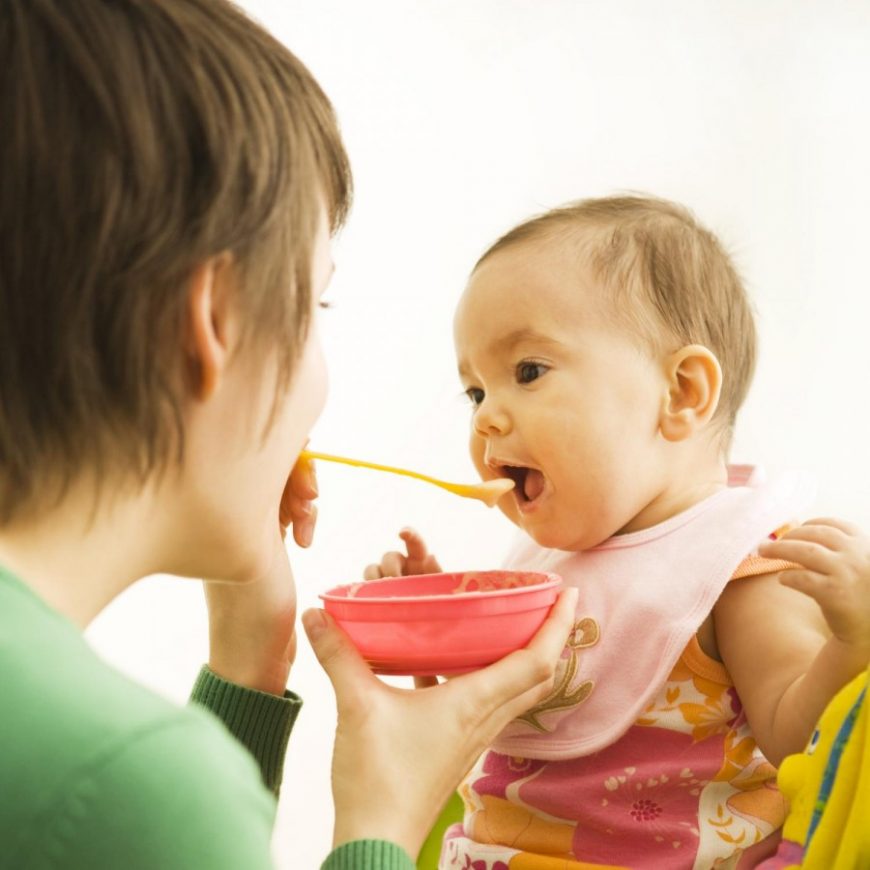
Share this information
Did you know that a breastfed baby is usually much less susceptible to illness? Although it is impossible to avoid them completely, the protective properties of breast milk help babies get sick less often and recover faster than formula-fed babies.
Breast milk contains antibacterial and antiviral agents. 2 The longer you breastfeed your baby, the lower the risk of colds and flu, ear and respiratory infections, nausea and diarrhea. 1 Scientists are already exploring the possibility of using breast milk to treat everything from conjunctivitis to cancer. 3.4
Should a sick baby be breastfed?
Yes. Breastfeeding promotes recovery and also helps to calm the baby. Breast milk contains antibodies, white blood cells, stem cells, and protective enzymes that help fight infections and help your baby recover faster. 1,5,6 In addition, the composition of breast milk (the balance of vitamins and nutrients) is constantly adjusted to the baby's body to help him recover as soon as possible. Thus, you will spend less time on sick leave and visit the doctor less often. 7
Thus, you will spend less time on sick leave and visit the doctor less often. 7
“Breastfeeding gives the baby everything she needs during her illness. This is his medicine, food, drink and comfort. For a baby, this is the best thing in the world,” says Sarah Beeson, a health visitor from the UK.
Surprisingly, when a child becomes ill, the composition of breast milk changes. When you come into contact with pathogens of bacterial and viral infections, your body begins to produce antibodies to fight them, which are then passed through milk to your baby. 8 When your baby is sick, your milk also has a dramatic increase in immune-boosting cells (white blood cells). 5
In addition, breast milk is very easy to digest, making it ideal for babies with indigestion.
“At 12 months my daughter contracted norovirus and could only breastfeed,” recalls Maya, a mother of two in Spain. produce more milk. It was amazing. After 48 hours, I was able to meet the daily requirement for milk. It saved my baby from a drip."
It should be taken into account that sometimes during an illness it is necessary to change the habitual breastfeeding regimen. For example, with a cold, a baby may want to eat more often, but little by little, both to calm down and because of nasal congestion, which makes it difficult to apply to the chest for a long time. If your baby has a stuffy nose, an upright breastfeeding position may be more comfortable, so don't be afraid to try different breastfeeding positions.
What should I do if my baby is seriously unwell and cannot breastfeed?
Sometimes a baby who is not feeling well may not have an appetite or the strength to feed. If your baby is not eating well, seek advice from your healthcare provider, nurse practitioner, or lactation consultant to help prevent dehydration.
You may be asked to express milk to feed your baby with a bottle, a Soft Cup*, or other suitable method that requires minimal effort from the baby.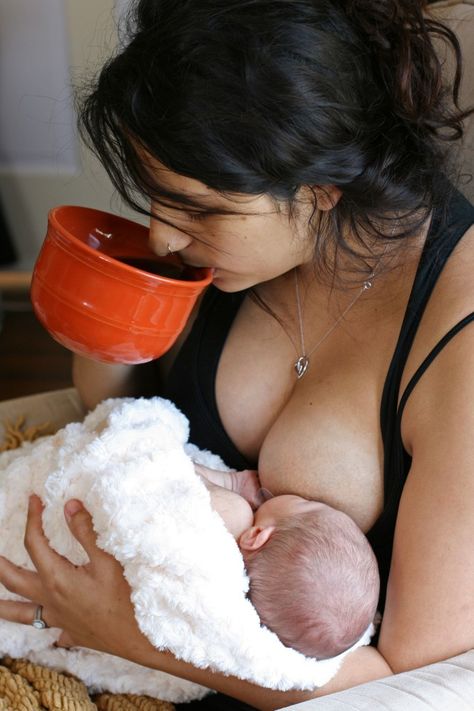 Pumping on a regular breastfeeding schedule will also help keep your milk supply stable.
Pumping on a regular breastfeeding schedule will also help keep your milk supply stable.
You can express milk with one of our convenient breast pumps, such as the modern electronic Swing Flex** or the Harmony** manual breast pump. Rest assured, freshly expressed breast milk is just as good as breast milk, so your baby will get all the protection and support it needs.
If you have concerns about your baby's health or how much milk they are drinking, see your doctor as soon as possible.
Can I continue to breastfeed if I become ill myself?
You may not want to do this if you feel unwell, but in most cases it is best to continue breastfeeding. If you have a cold, runny nose, diarrhoea, vomiting, or mastitis, continue breastfeeding as normal with your doctor's approval. The baby is unlikely to become infected through breast milk. Moreover, the antibodies contained in your milk will help reduce the risk of infection of the baby with the same virus 13 .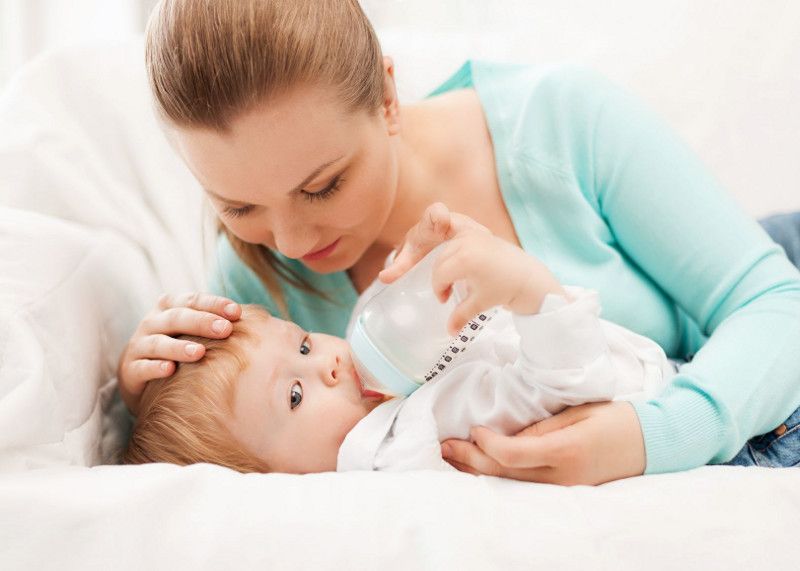
“Breastfeeding when sick is not only safe most of the time, but also beneficial. Your baby is the least at risk of catching your upset stomach or cold, as he is already in close contact with you and receives a daily dose of protective antibodies from milk, ”says Sarah Beeson.
If there is a risk of contracting a viral infection by airborne droplets, it is advisable to temporarily switch to expressing breast milk and bottle feeding.
In order not to lose the amount of milk produced when the body is still weakened by the disease, it is best to use the Swing Maxi Flex ** double breast pump, which helps to stimulate lactation, increase the amount of milk (by 18% on average) and increase its fat content (+1% ) 14 .
However, breastfeeding and pumping when sick can be very tiring. You need to take care of yourself so that you can take care of the baby. Try to drink more fluids, eat when you can, and get plenty of rest. Crawl under the covers for a few days and ask family or friends to help care for your baby if possible, so you can put all your energy into recovery.
“Don't worry about your milk supply, it will last. Most importantly, do not stop breastfeeding abruptly so that mastitis does not develop, ”adds Sarah.
Proper hygiene is very important to reduce the risk of spreading the disease. Wash your hands with soap and water before and after breastfeeding and pumping, preparing and eating food, using the toilet and changing diapers. Use a tissue when coughing and sneezing, or cover your mouth with the crook of your elbow (not your palm) if you don't have a tissue handy. Be sure to wash or sanitize your hands after coughing, sneezing, and blowing your nose.
Can I take medication while breastfeeding?
In agreement with the attending physician and compliance with the dosage, certain medications are allowed. 9.10
.
“When talking to a doctor or pharmacist for any reason, always state that you are breastfeeding,” she continues.
What about long-term treatment?
If you are on long-term treatment for diabetes, asthma, depression, or other chronic conditions, the benefits of breastfeeding may outweigh the risks. “Breastfeeding is often possible for almost any disease, with the exception of some very rare conditions,” Sarah says, “you will be very familiar with the drugs you are taking, and during pregnancy you can discuss them with your doctor or other specialist. There is guidance on the safe use of various medicines that all healthcare professionals use.” In any case, you should consult with your doctor.
“Breastfeeding is often possible for almost any disease, with the exception of some very rare conditions,” Sarah says, “you will be very familiar with the drugs you are taking, and during pregnancy you can discuss them with your doctor or other specialist. There is guidance on the safe use of various medicines that all healthcare professionals use.” In any case, you should consult with your doctor.
“I was on high doses of epilepsy medication, but I was still able to breastfeed,” recalls Nicola, a mother from the UK. “I saw a neurologist to ensure my son was safe and to minimize the risk of a seizure. Seizures can happen due to lack of sleep, and I fed day and night, but I took good care of myself, and my husband supported me. It was a positive experience."
What if I have to go to the hospital?
If you need to be hospitalized or urgently hospitalized, there are different ways to continue feeding your baby healthy breast milk so that you can return to normal breastfeeding after you are discharged.
“Express and freeze breast milk so that the caregiver can feed the baby. Practice at home ahead of time and be sure to let your doctors know that you are a breastfeeding mother, both before entering the hospital and while in it, ”recommends Sarah.
“If the baby is very small, you may be allowed to take him with you. Find out if the hospital has a supervising doctor or lactation consultant to contact. This specialist will support you, especially if you are in a general ward. If hospitalization is urgent, warn the doctors that you have a baby so that they take this into account.
Surgery under local or general anesthesia does not necessarily mean that breastfeeding will have to be stopped, or milk will need to be pumped and discarded. By the time you recover from surgery and can hold your baby, the amount of anesthetic in your breast milk will be minimal, so breastfeeding will be safe in most cases. 10 However, in any case, it is best to consult your doctor or attending physician beforehand.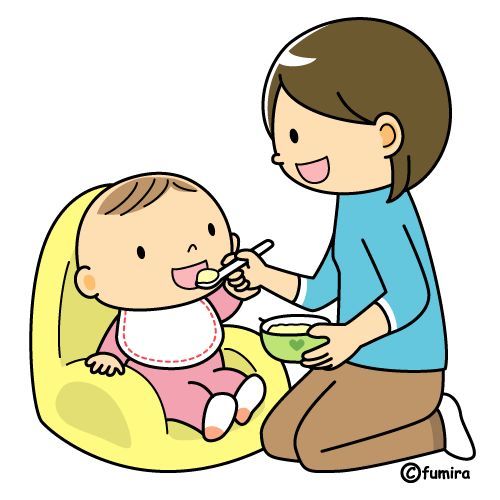
To ensure that the situation of treatment or departure does not affect the baby's diet, it is advisable to create a breast milk bank. This should be done daily by expressing one extra serving and freezing it in the handy, durable Medela Breast Milk Storage Bags. Even stored for several months and then thawed, your carefully prepared milk will still be incomparably healthier than formula.
For hygienic and easy pumping, use a breast pump with 2-Phase Expression technology for a fast, full flow of milk. For example, the ultra-comfortable Swing Flex** breastpump that adapts to the shape of your breasts and allows you to pump milk in a comfortable position, even lying back on the pillows 15 .
Don't forget to sterilize your breast pump with the Quick Clean microwave bags. Medela milk storage bags do not need to be handled as they are aseptically packaged and ready to use immediately.
Are there times when breastfeeding is not allowed?
In some cases, for the safety of the baby, breastfeeding should be stopped for a while, and instead, milk should be expressed and discarded to maintain milk production until the end of treatment. This includes radiotherapy and chemotherapy for cancer, herpes sores on the chest, and infections such as tuberculosis, measles, or blood poisoning that can be transmitted through breast milk. 11.12 Consult with a qualified professional about your condition to decide if you can continue breastfeeding in such cases.
This includes radiotherapy and chemotherapy for cancer, herpes sores on the chest, and infections such as tuberculosis, measles, or blood poisoning that can be transmitted through breast milk. 11.12 Consult with a qualified professional about your condition to decide if you can continue breastfeeding in such cases.
For quality lactation support during this period, you can use the dual electronic breast pump with innovative Flex technology or rent a Symphony Clinical Breast Pump** if possible. A list of cities where you can rent a breast pump can be found on the "Rent a Medela Clinical Breast Pump" page.
Literature
1 Victora CG et al. Breastfeeding in the 21st century: epidemiology, mechanisms, and lifelong effect. Lancet . 2016;387(10017):475-490. - Victor S.J. et al., "Breastfeeding in the 21st century: epidemiology, mechanisms and long-term effects". Lancet 2016;387(10017):475-490.
2 Lönnerdal B. Bioactive proteins in breast milk. J Pediatric Child Health. 2013;49 Suppl 1:1-7. - Lönnerdahl B., "Biologically active proteins of breast milk". F Pediatrician Child Health. 2013;49 Suppl 1:1-7.
Bioactive proteins in breast milk. J Pediatric Child Health. 2013;49 Suppl 1:1-7. - Lönnerdahl B., "Biologically active proteins of breast milk". F Pediatrician Child Health. 2013;49 Suppl 1:1-7.
3 Australian Breastfeeding Association [Internet]. Topical treatment with breastmilk: randomized trials. [ cited 2018 Apr 4]. Available from https://www.breastfeeding.asn.au - Australian Breastfeeding Association [Internet]. "Topical treatment with breast milk: a randomized trial". [cited 4 April 2018] See article at https://www.breastfeeding.asn.au
4 Ho JCS et al. HAMLET–A protein-lipid complex with broad tumoricidal activity. Biochem Biophys Res Commun. 2017;482(3):454-458. - Ho J.S.S. et al., "HAMLET - a protein-lipid complex with extensive antitumor activity". Biochem Biophys Res Comm.![]() 2017;482(3):454-458.
2017;482(3):454-458.
5 Hassiotou F et al. Maternal and infant infections stimulate a rapid leukocyte response in breastmilk. Clin Transl Immunology . 2013;2(4): e 3. - Hassiot F. et al., "Infectious diseases of the mother and child stimulate a rapid leukocyte reaction in breast milk." Clean Transl Immunology. 2013;2(4):e3.
6 Hassiotou F, Hartmann PE. At the dawn of a new discovery: the potential of breast milk stem cells . Adv Nutr . 2014;5(6):770-778. - Hassiot F, Hartmann PI, "On the threshold of a new discovery: the potential of breast milk stem cells." Adv. 2014;5(6):770-778.
7 Ladomenou F et al. Protective effect of exclusive breastfeeding against infections during infancy: a prospective study. Arch Dis Child . 2010;95(12):1004-1008. - Ladomenu, F. et al., "The effect of exclusive breastfeeding on infection protection in infancy: a prospective study." Arch Dis Child. 2010;95(12):1004-1008.
2010;95(12):1004-1008. - Ladomenu, F. et al., "The effect of exclusive breastfeeding on infection protection in infancy: a prospective study." Arch Dis Child. 2010;95(12):1004-1008.
8 Hanson LA. Breastfeeding provides passive and likely long-lasting active immunity. Ann Allergy Asthma Immunol . 1998;81(6):523-533. — Hanson, L.A., "Breastfeeding provides passive and likely long-term active protection against disease." Ann Allergy Asthma Immunol. 1998;81(6):523-533.
9 Hale TW, Rowe HE. Medications and Mothers' Milk 2017. 17th ed. New York, USA: Springer Publishing Company; 2017. 1095 p . — Hale T.W., Rowe H.I., Medications and Breast Milk 2017. 17th edition. New York, USA: Publishing House Springer Publishing Company ; 2017. p. 1095.
10 Reece-Stremtan S et al. ABM Clinical Protocol# 15: Analgesia and anesthesia for the breastfeeding mother, Revised 2017. Breastfeed Med . 2017;12(9):500-506. - Rees-Stromtan S. et al., AVM Clinical Protocol #15: Analgesia and Anesthesia for Nursing Mothers, 2017 edition. Brestfeed Med (Breastfeeding Medicine). 2017;12(9):500-506.
ABM Clinical Protocol# 15: Analgesia and anesthesia for the breastfeeding mother, Revised 2017. Breastfeed Med . 2017;12(9):500-506. - Rees-Stromtan S. et al., AVM Clinical Protocol #15: Analgesia and Anesthesia for Nursing Mothers, 2017 edition. Brestfeed Med (Breastfeeding Medicine). 2017;12(9):500-506.
11 Lamounier JA et al. Recommendations for breastfeeding during maternal infections. J Pediatr 2004;80(5 Suppl ):181-188. - Lamunier J.A. et al., Guidelines for Breastfeeding during Maternal Infectious Diseases. J Pediatrician (Journal of Pediatrics) (Rio J). 2004;80(5 Suppl):181-188.
12 Hema M et al., Management of newborn infant born to mother suffering from tuberculosis: Current recommendations & gaps in knowledge. Indian J Med Res .